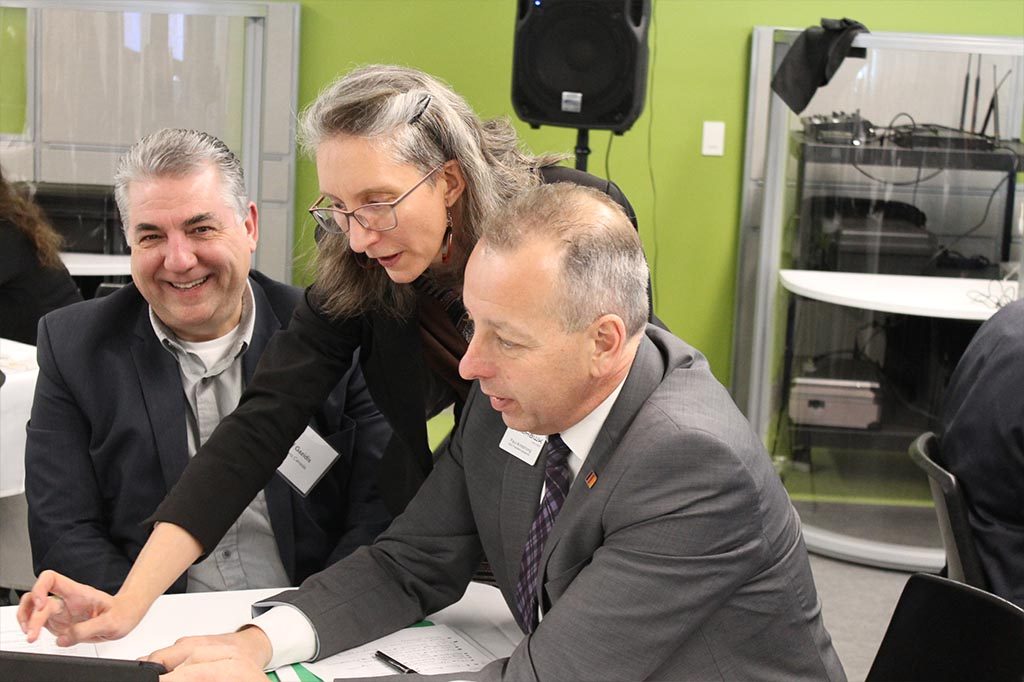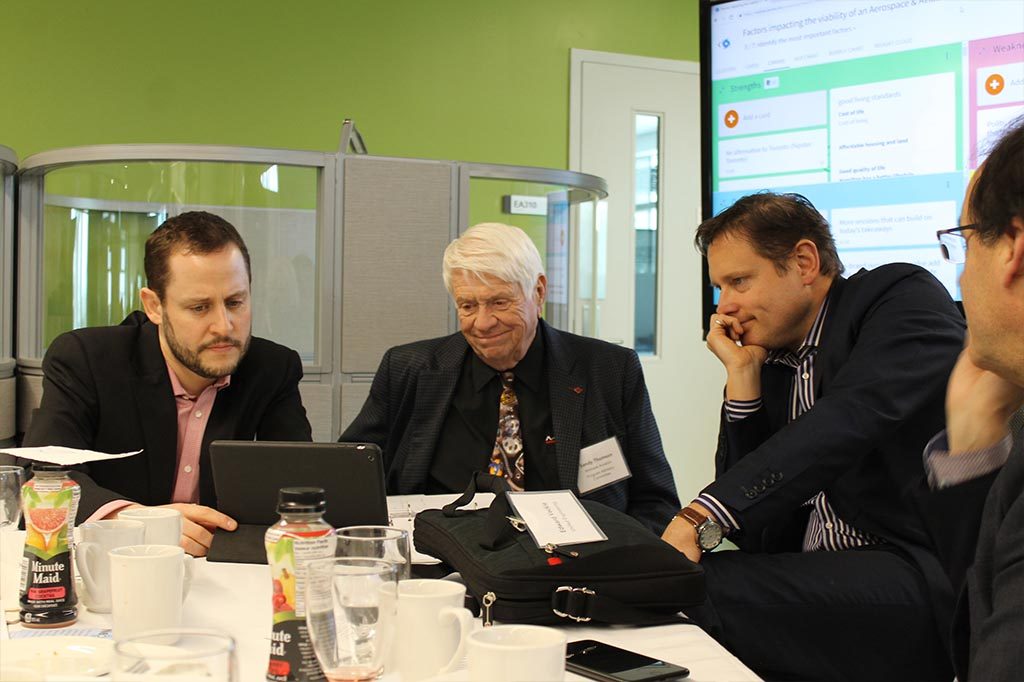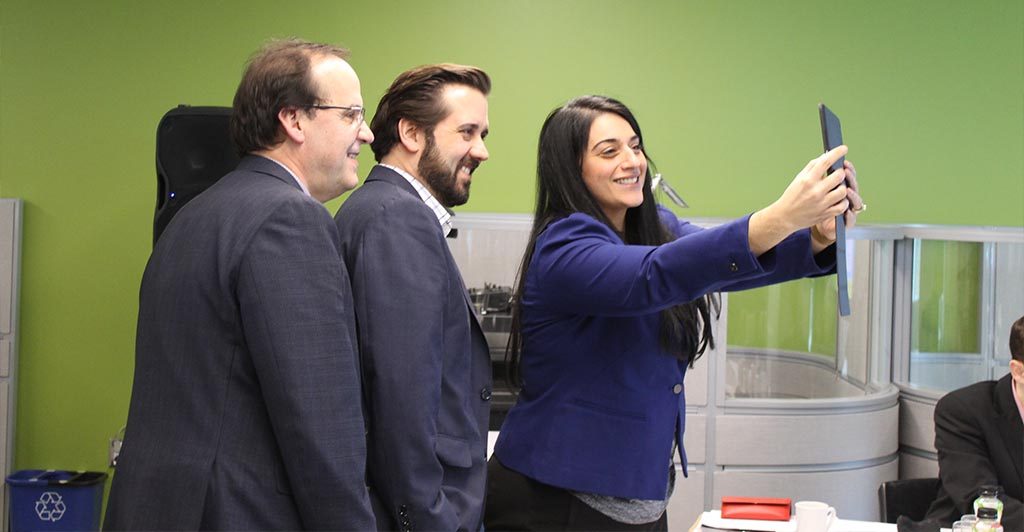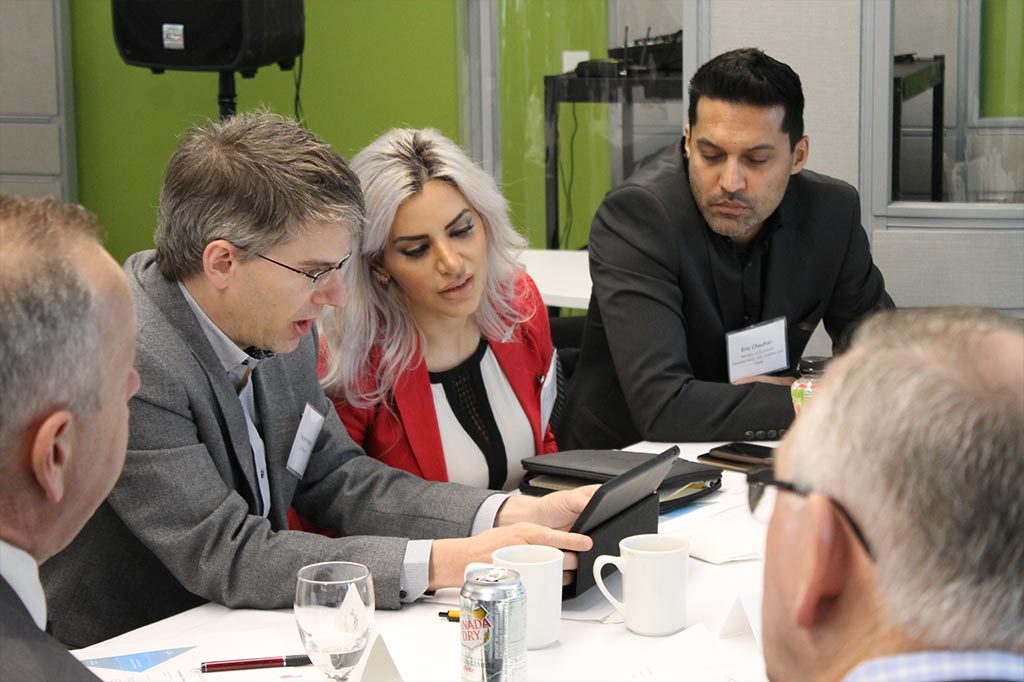Stakeholder Engagement
How we used digital facilitation for stakeholder engagement, engaging 30 executive leaders from various sectors in strategic planning.
The following case study outlines an in-person stakeholder engagement using the Stormz collaboration platform.
Because Stormz is an online platform, it integrates perfectly with video conferencing, meaning that your stakeholder engagements can take place virtually.
For more information on virtual stakeholder collaborations using video conferencing and Stormz, please contact us.
Executive leaders representing the aerospace and aviation industry, as well as representatives from government and academia, were gathering to create momentum and a potential strategy for positioning their city as an aerospace hub. The client had a pretty good idea of what they wanted to do: run a day-long workshop to build a vision and strategy for moving forward. They had thirty stakeholders committed to attending the gathering; they even had a draft agenda.

What they didn’t have was a meeting facilitator. Their challenge was stakeholder engagement: how to fully engage all thirty participants in strategic conversations and how to document the highlights so that everyone’s contributions could help shape a collaborative strategic plan.
The organizers knew they didn’t want a typical engagement; this wasn’t about consulting people to simply gain consensus, nor was it about scratching the surface of the issues so they could check off a box and claim they “consulted” stakeholders. This was about involving stakeholders fully in open and forthright dialogue to get a diversity of viewpoints, expertise and ideas, and to advance the thinking on what it would really take to bring this aerospace hub to life.
Someone told our client about a cool new digital facilitation technology called Stormz. Integrated into the meeting by facilitators trained in the use of Stormz, it breaks free from the top-down format of traditional meetings. Suitable to both small and large engagements, Stormz enables collaborative work phases where everyone has instant access to the inputs of all others in the room. Instead of Post-it Notes™ and flipcharts, participants use iPads connected to a secure and confidential local Wi-Fi network.
Having determined that they wanted to use Stormz for their meeting, the client needed a Certified Stormz facilitator to design and facilitate a stakeholder engagement that would set direction, establish opportunities and challenges associated with creating the Aerospace Hub in their city, and identify strategies and key action steps. They needed this activity to take place within the context of an already booked meeting of only 4.5 hours. And that’s where we came in.
There is a fine art to stakeholder engagement. At its essence is an understanding of the stakeholder’s role in a multi-phased process of thinking that results in a specific outcome or product.
In this case, the client’s outcome was a strategy. Stakeholders are not responsible for building the end product of an engagement; they’re responsible for contributing the thinking, and the problem owner will decide how to use their contributions. So, a critical part of our solution for the client was to establish the roles and responsibilities in the engagement process.
After a review of the target outcomes, proposed agenda, purpose and objectives of the session, we delivered some bad news and some good news to the client. The bad news was that they had packed the agenda so tightly that the level of required dialogue and the desired results could be compromised. The good news was that if they were willing to take a different means to get to their outcome, we could get them there much more efficiently and effectively.

This is a common occurrence: clients often think the more they can jam into the meeting, the better the consultation. It’s not the case at all. Productive dialogue needs space to happen. Our approach is “less is more” and “simpler is better.” We look at these engagements through the lens of the participants’ experience as well as the intended outcomes.
We proposed that the engagement be framed as a problem to be solved creatively. The stakeholders were the problem solvers who would contribute their creative thinking. We established one member of the guiding team as the authority for decision-making in the session, so that all participants would have clarity on their role as contributors and would understand how decisions would be made.
The problem statement for the engagement was:
How might we strategically establish this city as an aerospace manufacturing centre or hub?
We then worked through a six-step collaborative process with the client. The process involved:
- Clarifying meeting purpose and outcomes
- Developing a new workshop design
- Reviewing the new meeting design and improving it with the client leads
- Converting the meeting design to a Stormz digital format, reviewing and improving it with the client leads
- Delivering the workshop with our facilitators
- Generating the Workshop Results Report

The final workshop design had participants work through five work phases, each designed to stimulate the contribution of specific data points. These data points would be used by our client to draw conclusions and make decisions, and complete various components of the strategic plan.
In work phase 1, stakeholders provided structured feedback on the idea of establishing an aerospace hub. This was a fully participatory, 360◦ analysis of the idea that:
- Brought clarity to the value and benefits stakeholders recognized in the hub
- Highlighted issues and concerns they anticipated with the idea
- Elicited their suggestions for overcoming the issues and concerns so that the project could move forward.
In the second work phase, stakeholders were asked to contribute ideas on the vision for the hub. They did this by brainstorming two sides of the coin: good things they’d like to see happen and terrible things they’d like to avoid. The result of asking for polarized data was a picture of wishes that helped to describe what stakeholders wanted the hub to be and a heads up on the concerns that would need to be overcome—good input for objectives and tactics in the planning process.

In work phase three, stakeholders were randomly assigned to new work groups so that a further diversity of opinions could be leveraged. The focus here was to evaluate the strengths, weaknesses, opportunities and threats for establishing the hub. The results were deep insights into the how the city’s history as a blue collar “steel town” could impact the initiative and a long list of pluses about the area.
An analysis activity challenged participants to look at results in two components of the SWOT (Strengths, Weaknesses, Opportunities, and Threats). By focusing on strengths that could be used to leverage opportunities, stakeholders were able to make recommendations to our client that were then prioritized for relevance and importance to moving forward.
In the fourth work phase, participants recommended priorities and plotted them along a five-year timeline based on complexity. This resulted in our client getting a preliminary sequencing of events to consider as they built the strategy and a better sense of the complexity of issues that would need to be dealt with as they moved forward.
In the final work phase, we asked participants to have some fun and reflect on their experience and the progress made during the day. Here they used the iPads to take selfies of their teams and share comments with the organizers about their engagement experience.
We met the client’s objectives for the session and exceeded the desired outcomes. As an added bonus, we helped them gain the enthusiasm, trust and commitment of stakeholders in the process. Because of the way we had the stakeholders interacting with our Stormz digital facilitation tool, we were able to deliver a Results Report immediately after the session.
As a result of the session, stakeholders recommended that our client shift the focus from establishing an aerospace manufacturing centre or hub to a focus on a broader economic impact. They wanted the city to become a world-class aerospace manufacturing and aviation hub. They recognized great opportunities for vertical market integration. Not only did they validate the economic benefits our clients anticipated, they brought to light issues and concerns that needed attention. And when asked how to overcome these issues, they offered ideas beyond those our client had already come up with and were able to provide guidance to our client on how to prioritize strategic actions such as talent development, leveraging partnerships, and attracting businesses to the city.

“We have the resources to implement the technology advancement centre that will drive technology adoption.”
“This event has been inspirational. We are excited to see the enthusiasm for helping to make our Aerospace industry more successful and prosperous.”
“There was an authentic willingness to collaborate together!”